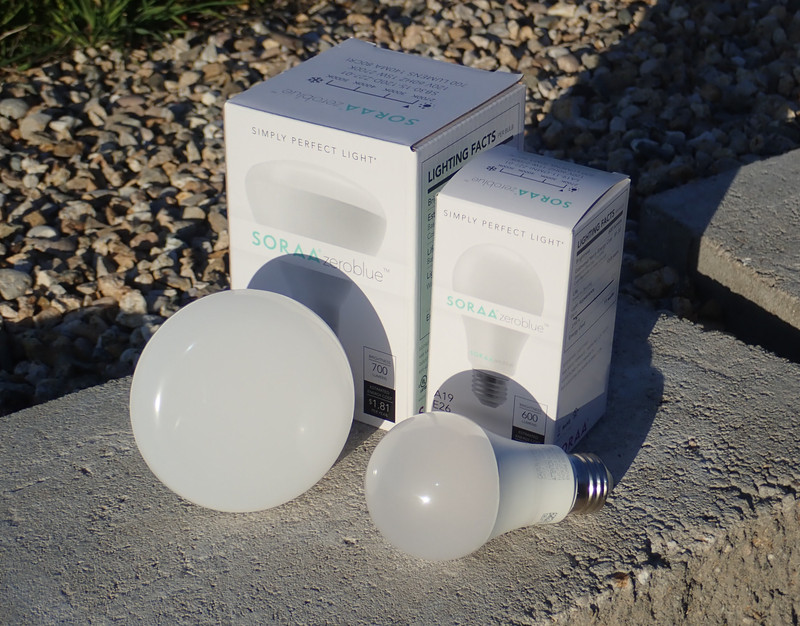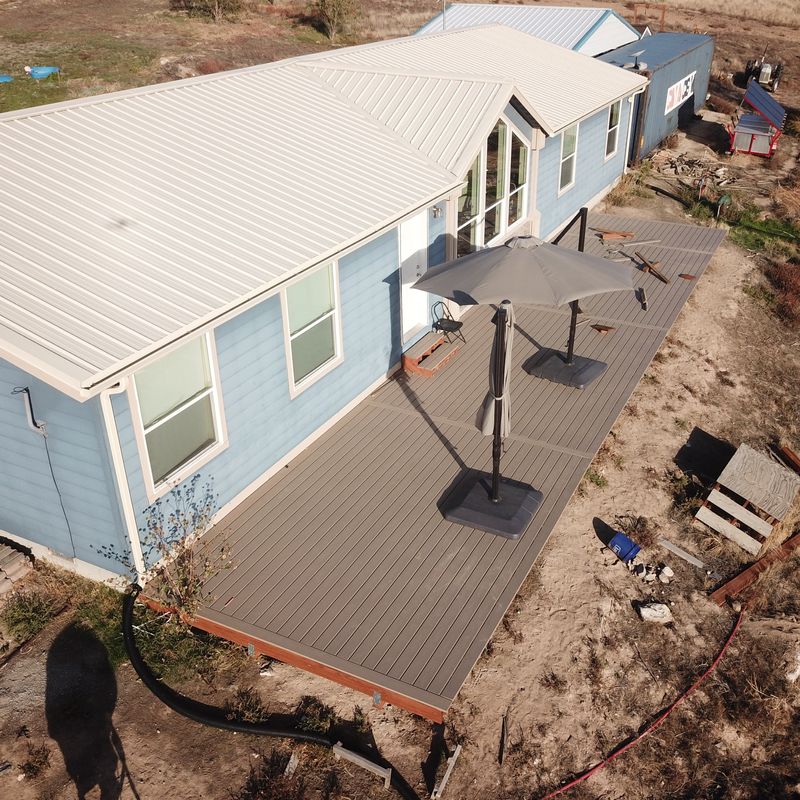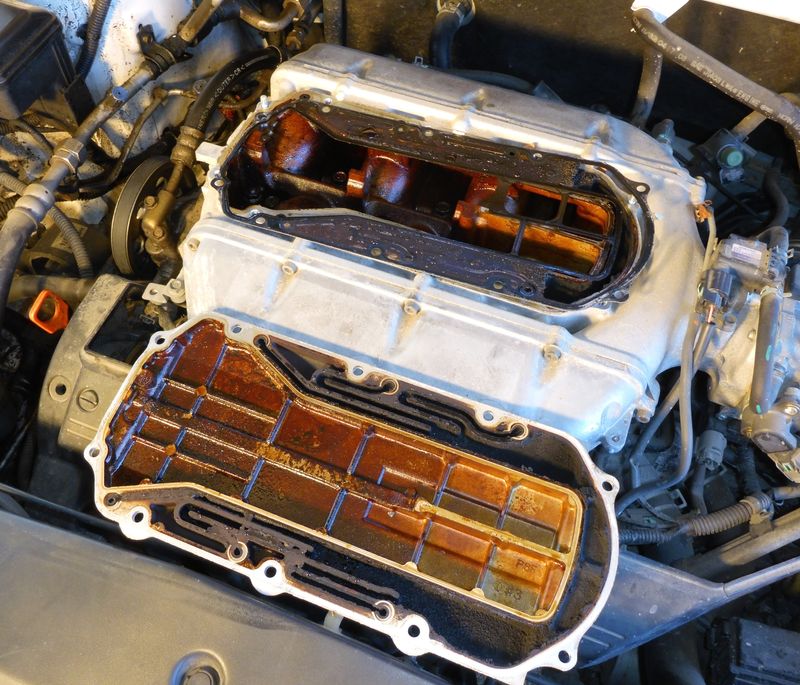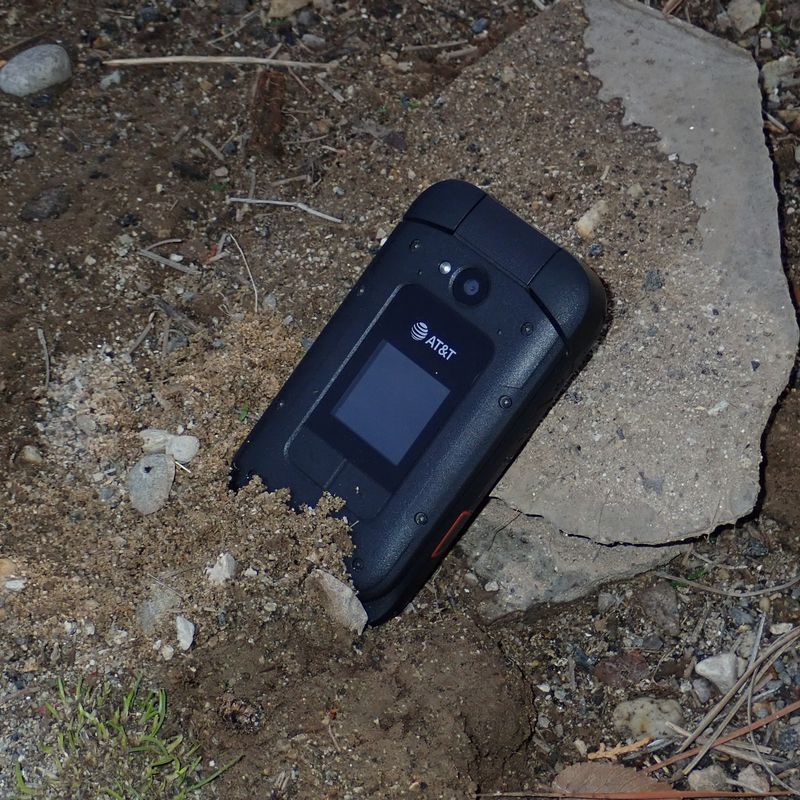I, Syonyk, being of sound and mind and body, do hereby make this post in which I talk about particular LED lights that I find both acceptable and beautiful.
And I genuinely never expected to say that.
This week, a review of the Soraa ZeroBlue series of LEDs.
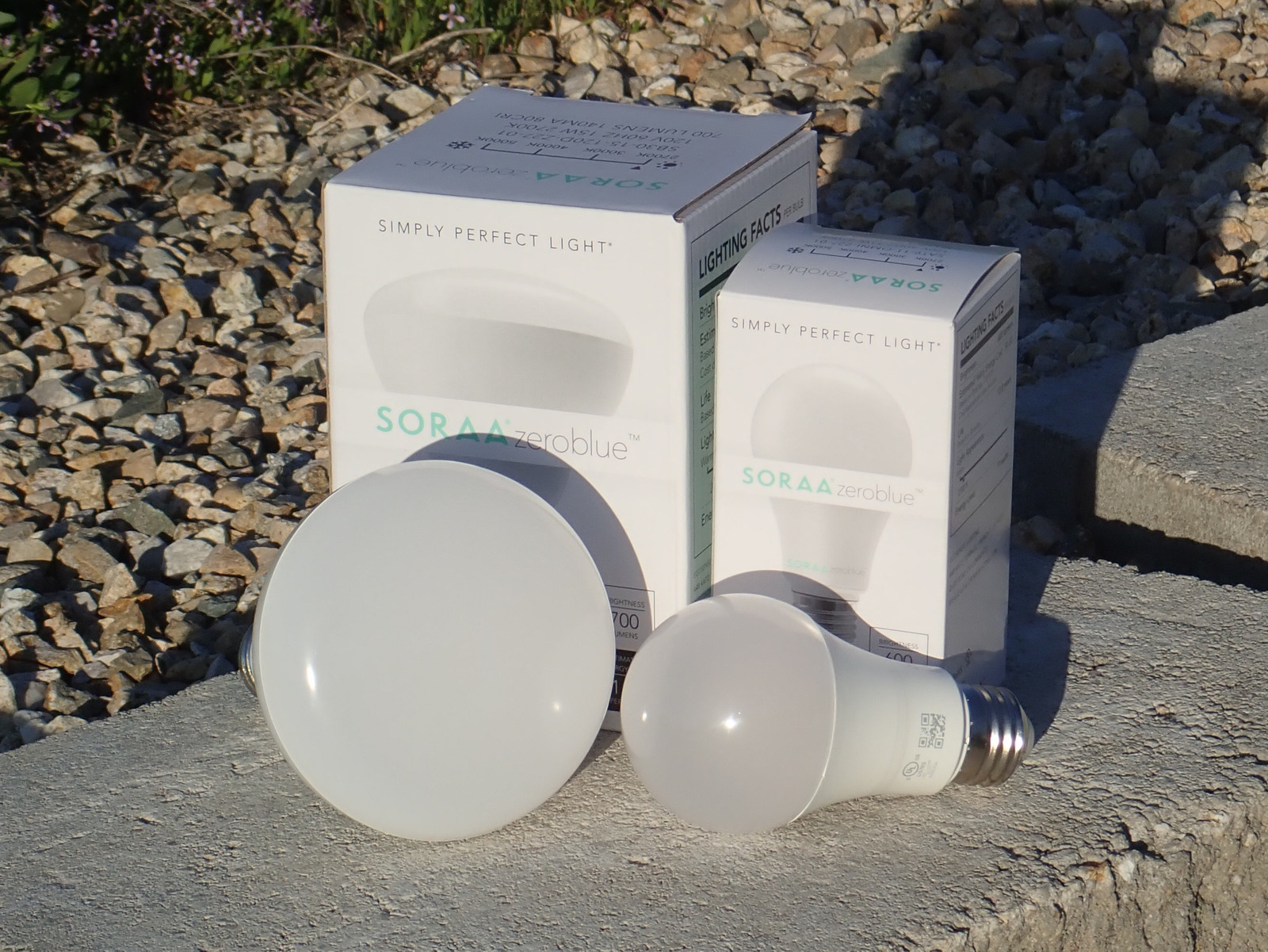
My Quick History of Lighting
If you’ve followed this blog for a while, you’ve probably suffered through some of my posts about LEDs - I’ve written over 25k words on light bulbs alone, not counting another nearly 20k words on kerosene light and heat. Like quite a few people, I’d just gone to LEDs without thinking too much about it - light is light, LEDs use less power, put out less heat, and it’s the better thing to do for the environment, right? Unfortunately, about two years ago, I went down a rabbit hole of “blue light, LEDs, human health, and melatonin” - which has led to me deciding to replace a lot of LEDs with incandescents in the core parts of our house used in the evening. They’re on dimmers, they last about forever as a result, and they’re far lower blue, as well as far richer light.
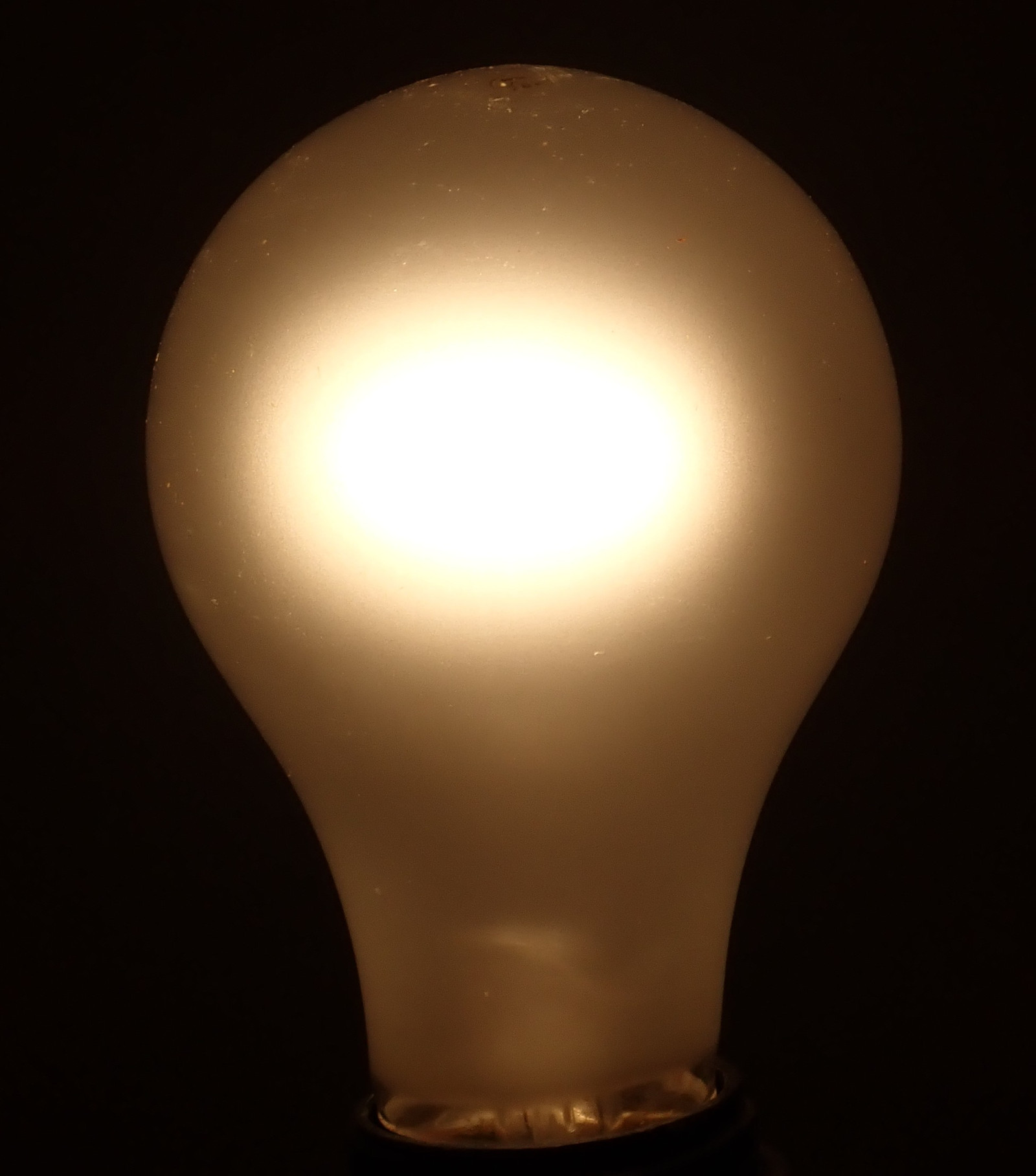
I’ve also been using kerosene lanterns for reading at night. They put out a wonderfully warm orange-white light, and are great for books. I won’t pretend the fuel burn is trivial, but from a human health perspective, they’re actually quite good (yes, I am aware of claims about particulates, and, if you dig into the studies, that’s open wick kerosene lights, not cold blast lanterns, and, yes, I’ve measured the exhaust from mine to verify it’s clean). I like my low-blue evening light.
The Problem with LEDs
You can dive into my main post on LED lighting for the details, but the short of it is that basically all consumer LEDs are “blue pumped” - they use a blue LED at the core, with phosphor coatings to smear this energy out to make white light. It’s fairly cheap, it’s quite a bit more efficient than incandescent bulbs, and all of them, even the “warm 2700K” sort of lights, are hellishly blue - squarely in the chunk of spectrum that the human eye uses to determine if it’s day or night. Your LEDs, in the evening, trick your body into thinking that it’s still day out. This totally fouls out human circadian rhythms, and leads to things like “taking a few hours to fall asleep,” or “dragging in the morning,” and other nasties (shift work, with overnight light, is considered a probable carcinogen by some groups).
There’s nothing wrong with LEDs during the daytime - if anything, we tend to get less blue than we need to really keep things in sync, so bright blue LEDs during daylight hours are a good thing. They’re just no good after the sun is down - and unfortunately, that’s when we need light the most. I’ve reviewed a range of consumer LEDs, and they’re all just very, very blue. Even the 2700K stuff has a lot of blue.
But… Violet Pumped?
The thing is, there’s no reason that white LEDs have to be blue pumped. There’s an alternative, which is a violet pumped LED - you use a purple LED, instead of a blue one. If you imagine the standard deep purple glow of a LED streetlight with a burned out phosphor coating, this is another valid way to make a white LED. You use a violet emitter, and while it’s marginally less efficient in terms of lumens per watt than a blue emitter, it can also be configured to pretty much entirely avoid the blue regions of spectrum that are a problem for human sleep.
There’s just not been much in the way of “consumer LEDs” that use this technology. Anything you can easily find, even the high color rendering index YUJI LEDs, are blue pumped - and while getting more over into the reds helps with color rendering, it doesn’t help with the problem of “keeping people up in the evenings.”
I’ve found one, though! The Soraa ZeroBlue line of LEDs!
Soraa ZeroBlue
Right now, there are two options for the ZeroBlue bulbs - a standard A19 style LED bulb, and the BR30 “overhead can light” bulb. This pair covers quite a few use cases, though I’d prefer a few more form factors. If you’re familiar with LED bulb lumens and power consumption, you’ll notice that these bulbs seem to draw a bit more power for the lumens. This is a result of both the violet pumped system (which is marginally less efficient), and also in pushing the spectrum out into the reds. The red light doesn’t “count” for as many lumens at a given energy output, even though it looks far better. A super high efficiency (lumens/watt) bulb is going to be very green. The best case is a 555nm monochromatic emitter, but that’s not really anyone’s idea of tolerable light, either.
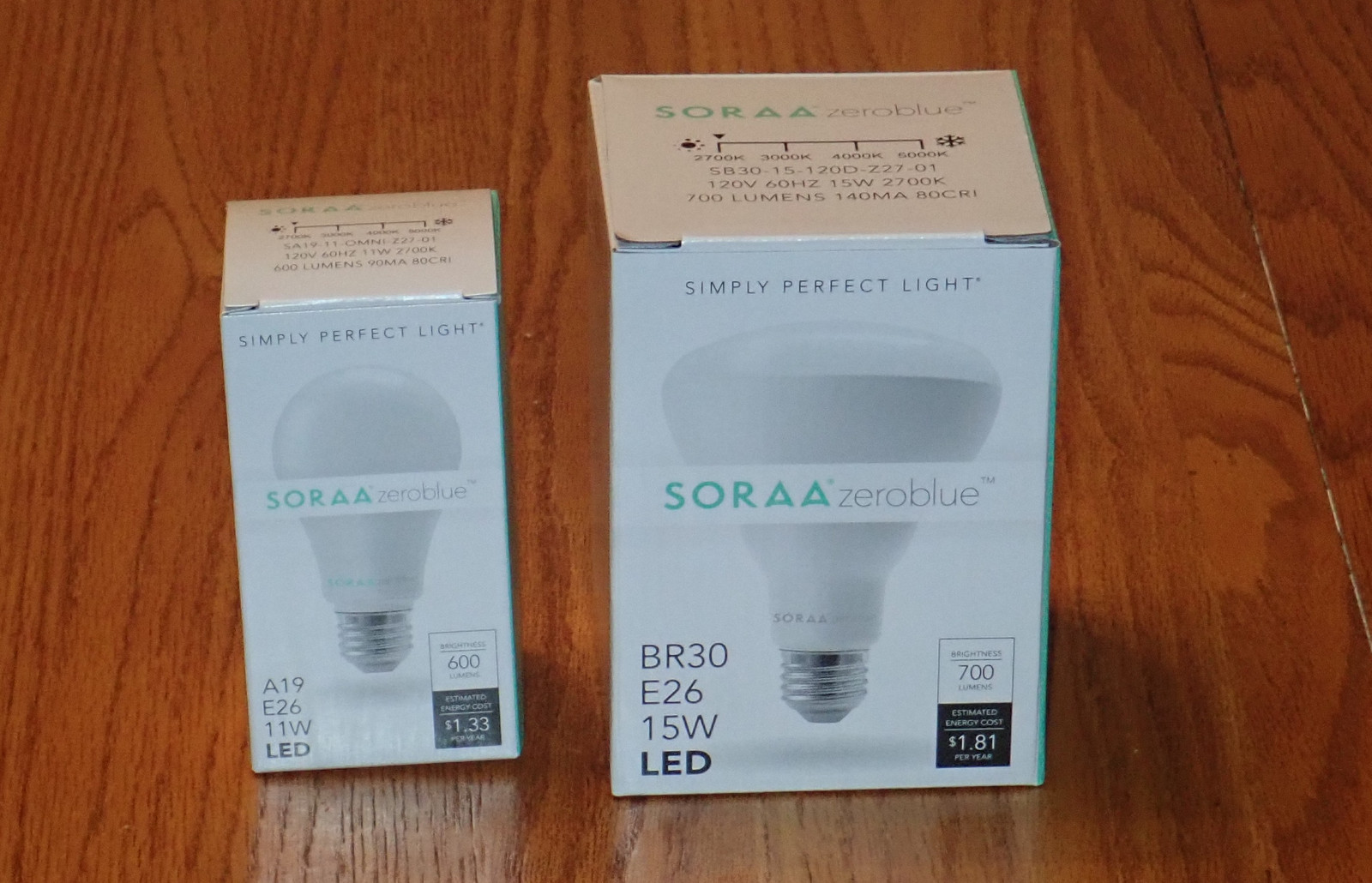
The top helpfully informs us that the light is 2700K (good, though I’d prefer lower), how much current they pull, and that the CRI (Color Rendering Index) is 80 - which also isn’t great. But, the claim of these bulbs is that they’re missing an entire chunk of spectrum (the blues that keep humans awake at night), so I can’t say I expect a high color reproduction index. You can’t have it both ways - you can either have a sun-like blackbody spectrum and a good CRI, or “missing the blues,” which shows up there. Pick your poison - literally.
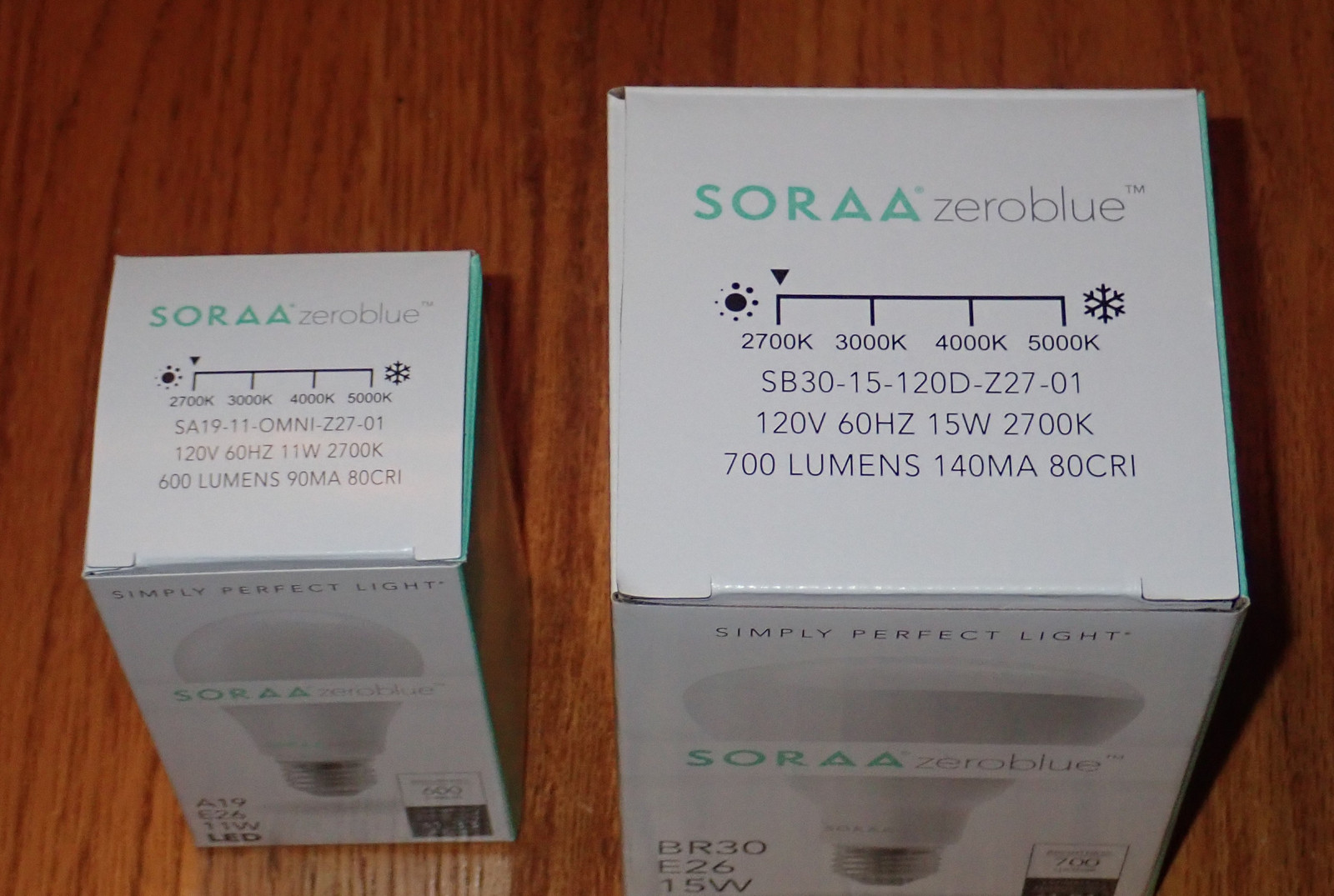
The bulbs are rated for dimming (which I’ll poke at later), and, importantly, the A19 bulbs are rated for enclosed fixtures! It’s a dirty little secret of the lighting industry that most of the A19 bulbs on the market aren’t rated for “recessed or enclosed” fixtures - which means if you put them in the sort of fixture that most homes have, they’ll overheat and die early. I’m also a little bit disappointed by three years warranty, because 25k hours is just short of three years of continuous operation. If you run 3 hours a day, 25k hours is almost 23 years. Anyway… they seem well built, but the warranty is not encouraging.
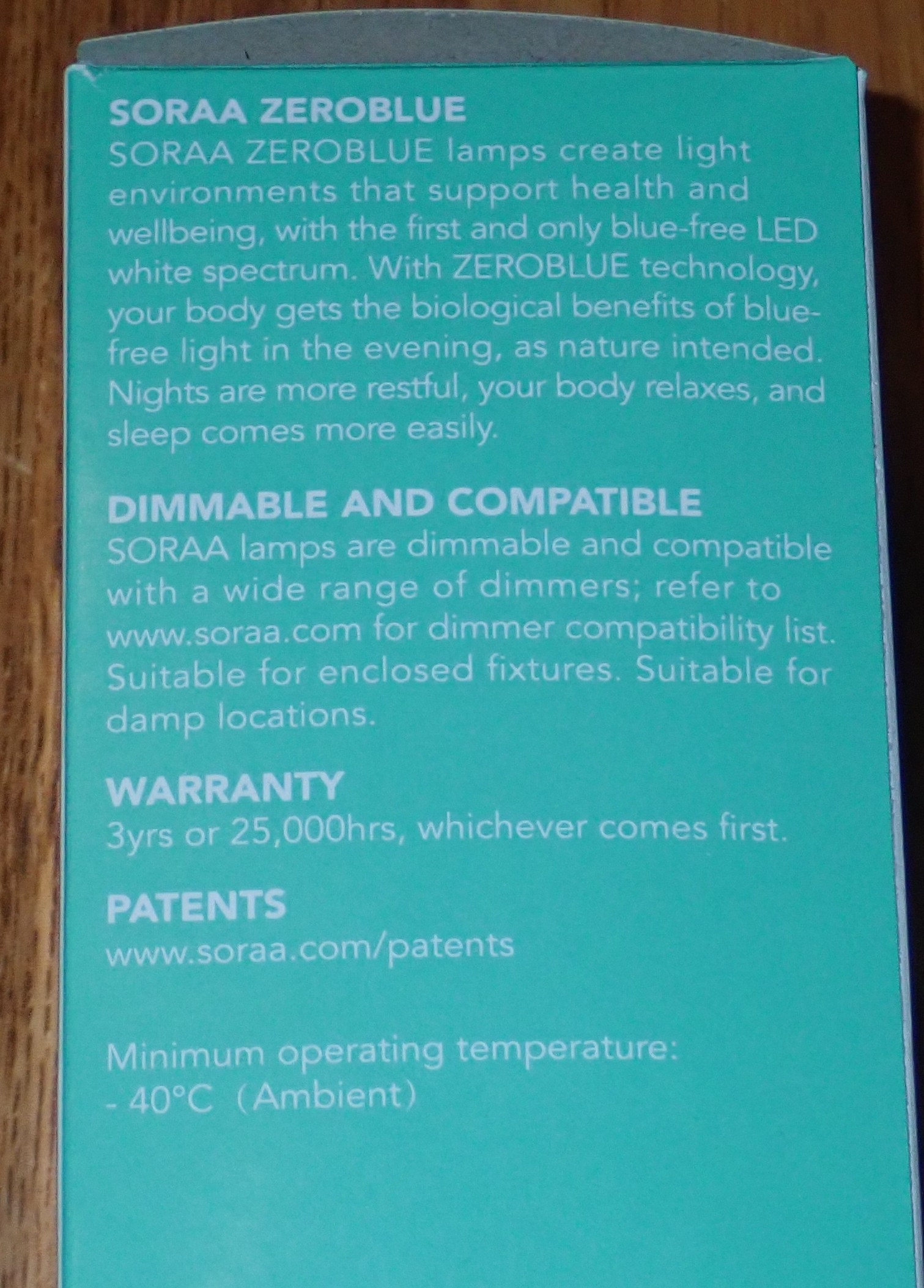
Going around to the other side, the BR30 is rated for 700 lumens, and… 13.8 years? At 3 hours a day? That’s a mere 15k hours, which, I’ll note, isn’t exactly consistent with the warranty.
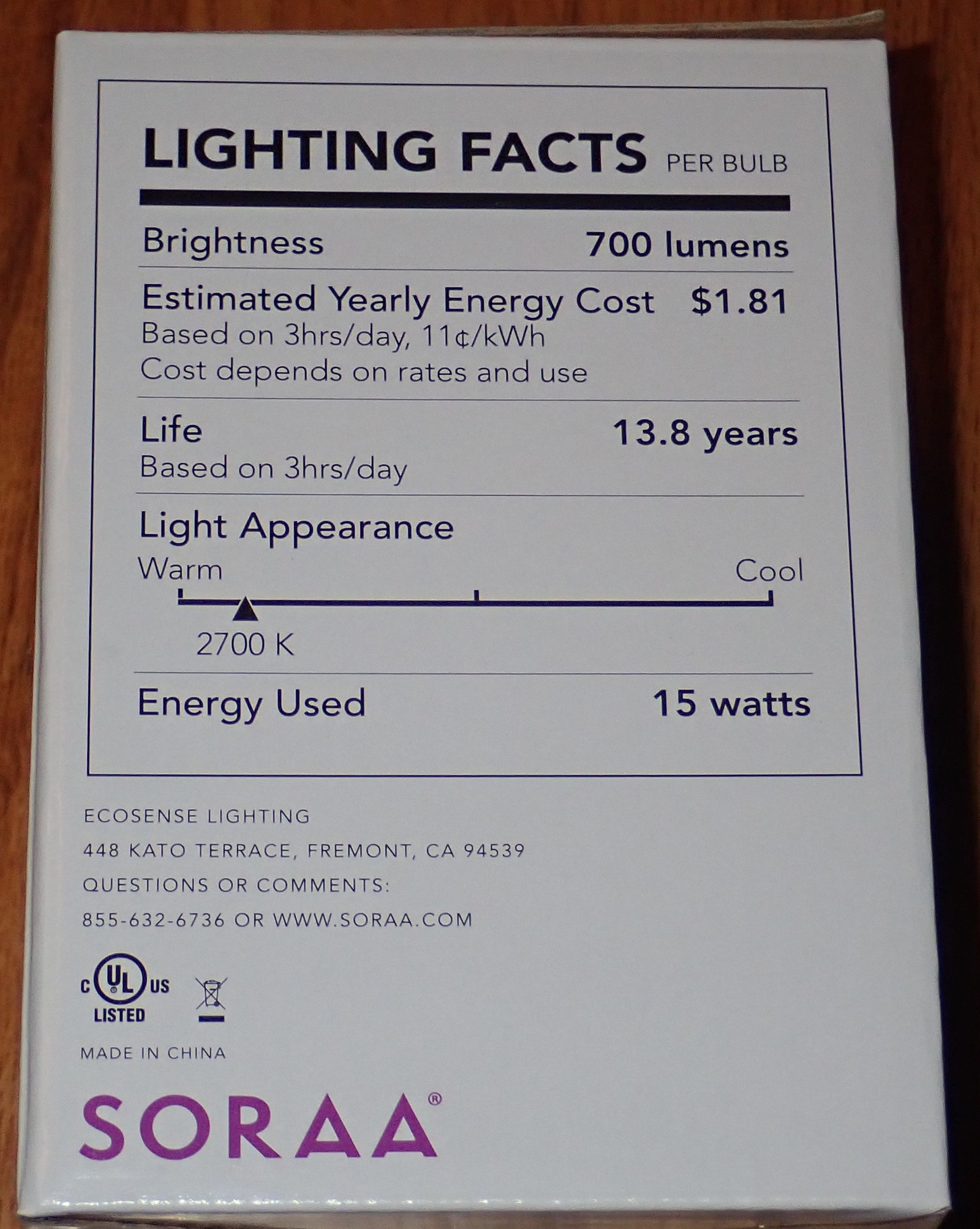
There’s the same data on the A19 bulb box side.
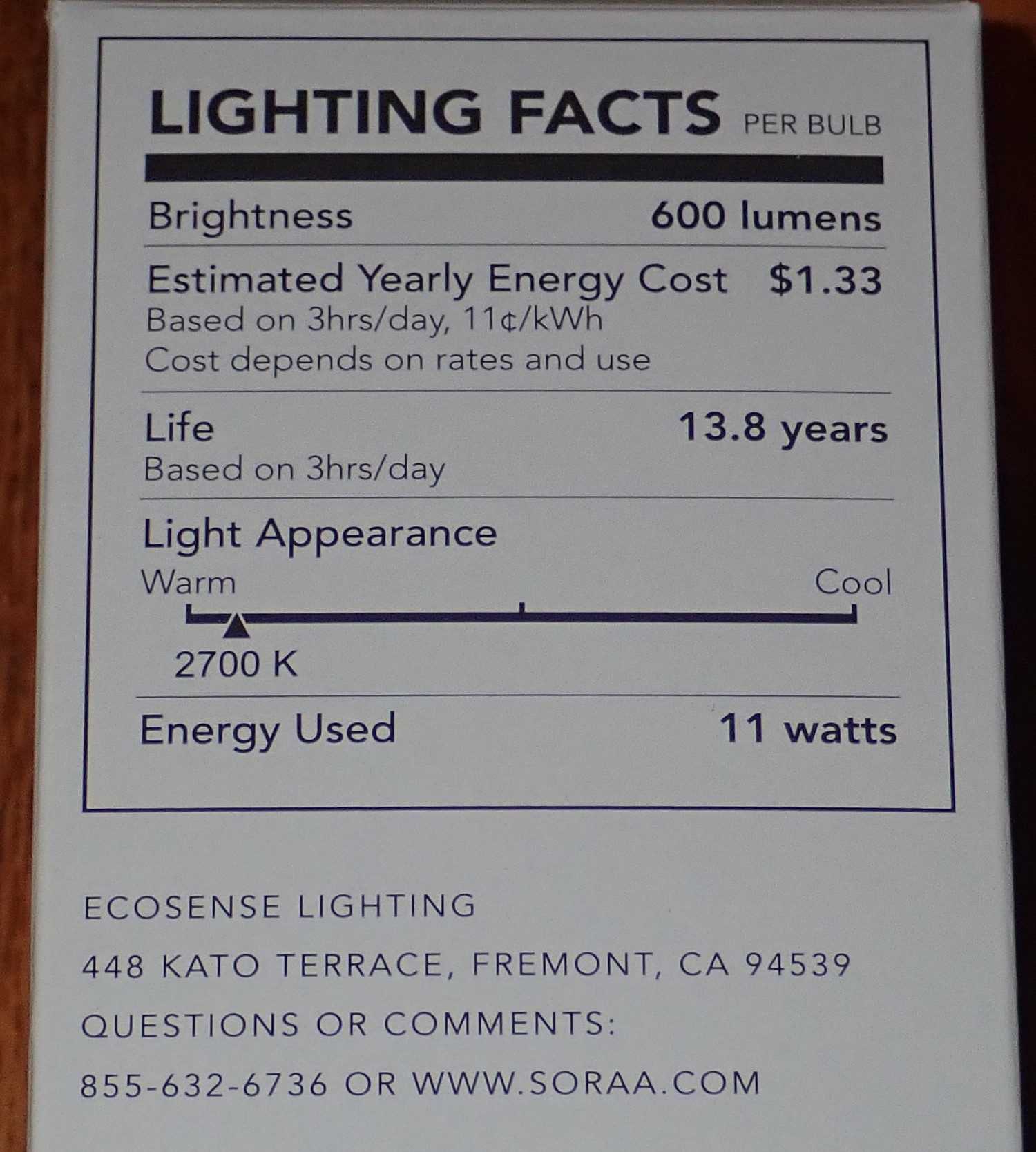
What’s the magic part? Their spectrum. According to their marketing material (which wasn’t very well spell checked - “Inhibis”?), they shouldn’t be putting out blue in the regions that matter - or, at least, should have very minimal overlap.
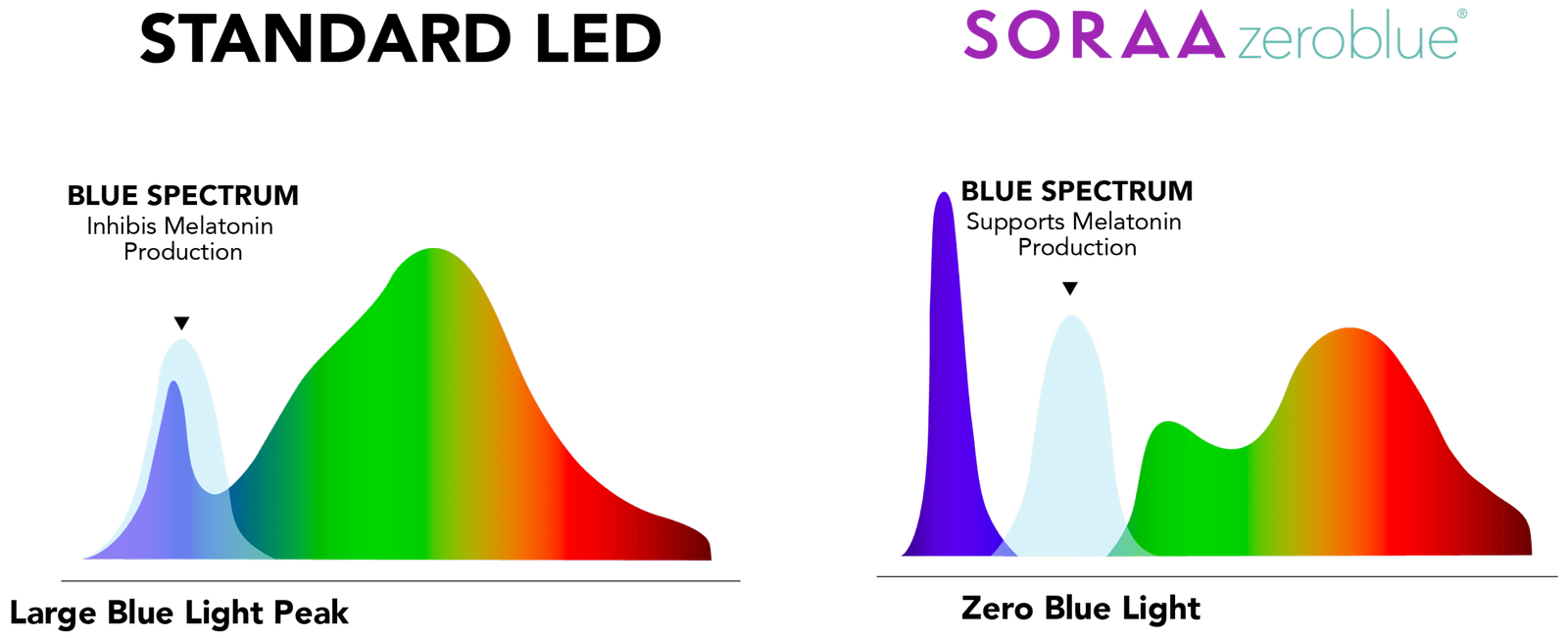
Spectrums: Oh My Yes!
All of that is well and good - it’s a lot of good sounding fluff, and they’ve got the PDFs to back it, all the nice charts that claim to demonstrate how amazing they are. But I’m the skeptical sort, and I’ve got my very own melanatopic impact calculations based on some extracted curves. What does my spectrometer say?
Well, shockingly, it says almost exactly the same thing their spectrum charts claim! It says that these are staggeringly low blue, and are, in fact, just as violet pumped as claimed!
I’m going to start out here with some comparison spectrums, since it’s been a while since most people will have looked at spectrums. The first is from an “Edison Bulb” - one of those huge, long, bare filament bulbs that you find at hip restaurants - and I’m going to use one that I’ve dimmed down pretty far. They’re deep into the oranges, and are my preferred “late night” sort of light. The spectrum is deeply redshifted (my spectrometer falls off badly in the reds - this bulb extends far further into the reds than my chart shows, but this is the limit of my equipment), and doesn’t have much blue at all in it.
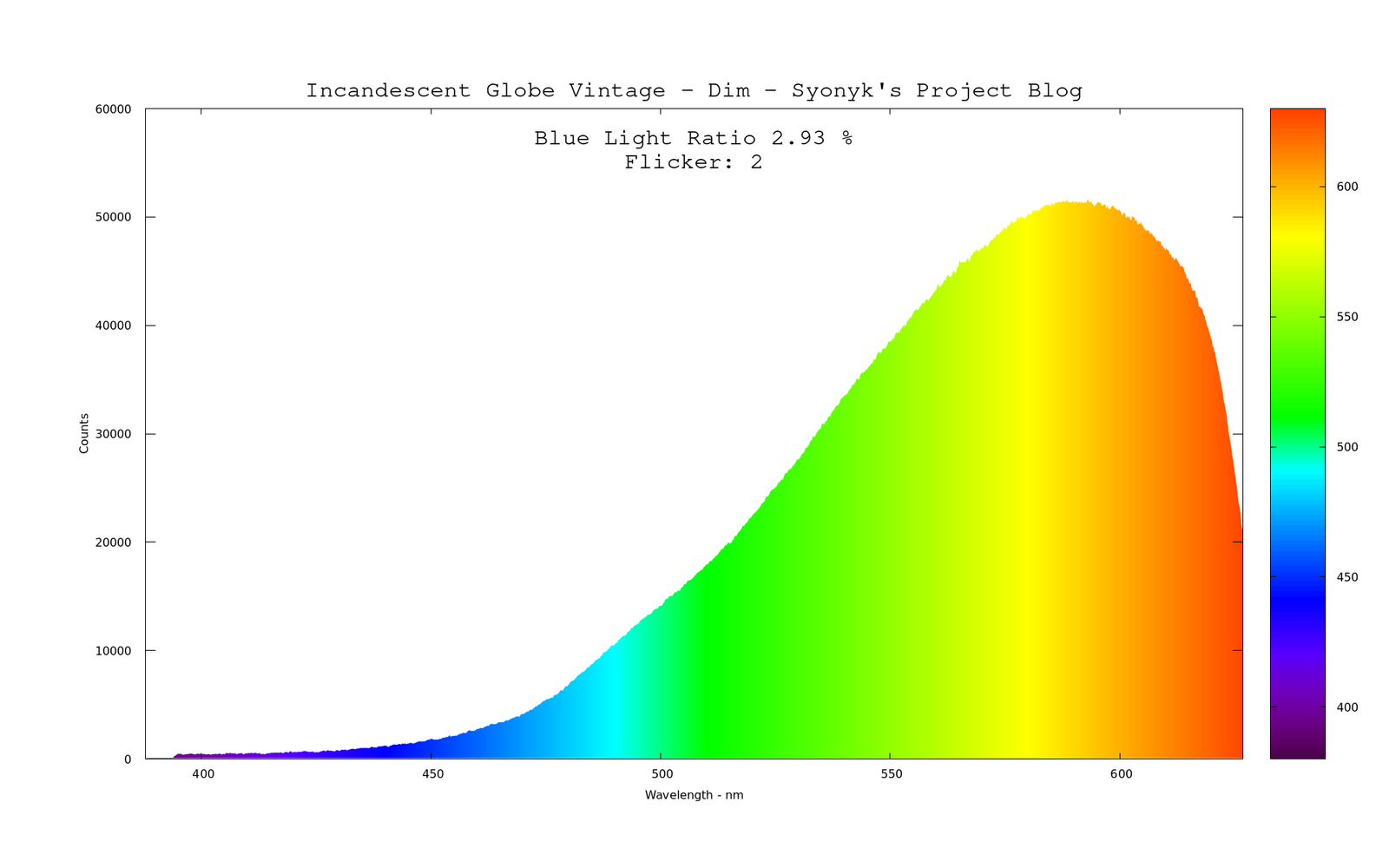
Next, the “Bedtime Bulb.” This is a bulb specifically sold for being low blue in the evenings, and while it’s got a nice spectrum over into the reds, it’s still clearly a blue pumped LED, and it has a good bit more blue (per my influence math) than I’d really prefer. It’s better than “really blue 5000k” bulbs, but it’s honestly nothing special as far as warm LEDs go. It dims well and is very low flicker, but fundamentally it’s still a blue pumped LED.
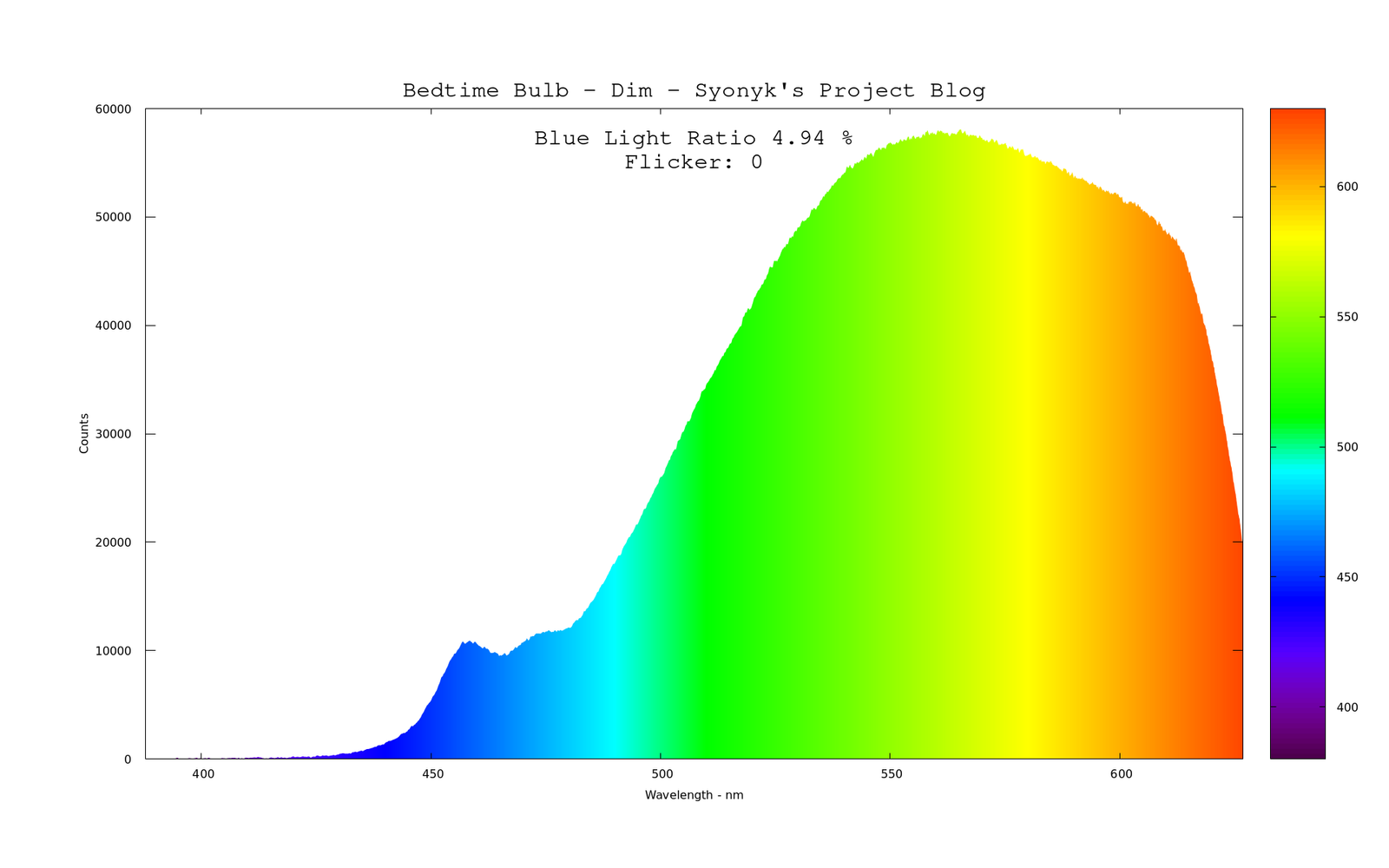
Now let’s look at the Soraa ZeroBlue. Cranked up, full bright, their BR30 bulb (a flood bulb for overhead cans), is exactly what it says on the tin. Not only is there zero doubt that this is a violet pumped LED, look at that gap in the blues! There’s basically nothing in the blues, and the blue light ratio I calculate tells the story clearly - there’s very, very little blue here in the regions that matter!
My chart shows less of the reds than theirs does, and I’m comfortable calling that an impact of the limits of my meter. Just subjectively, there is a ton of red in this light, and it shows in how things look. I just can’t measure the deep reds with my meter, because I purchased it specifically to look at the blue end of the spectrum.
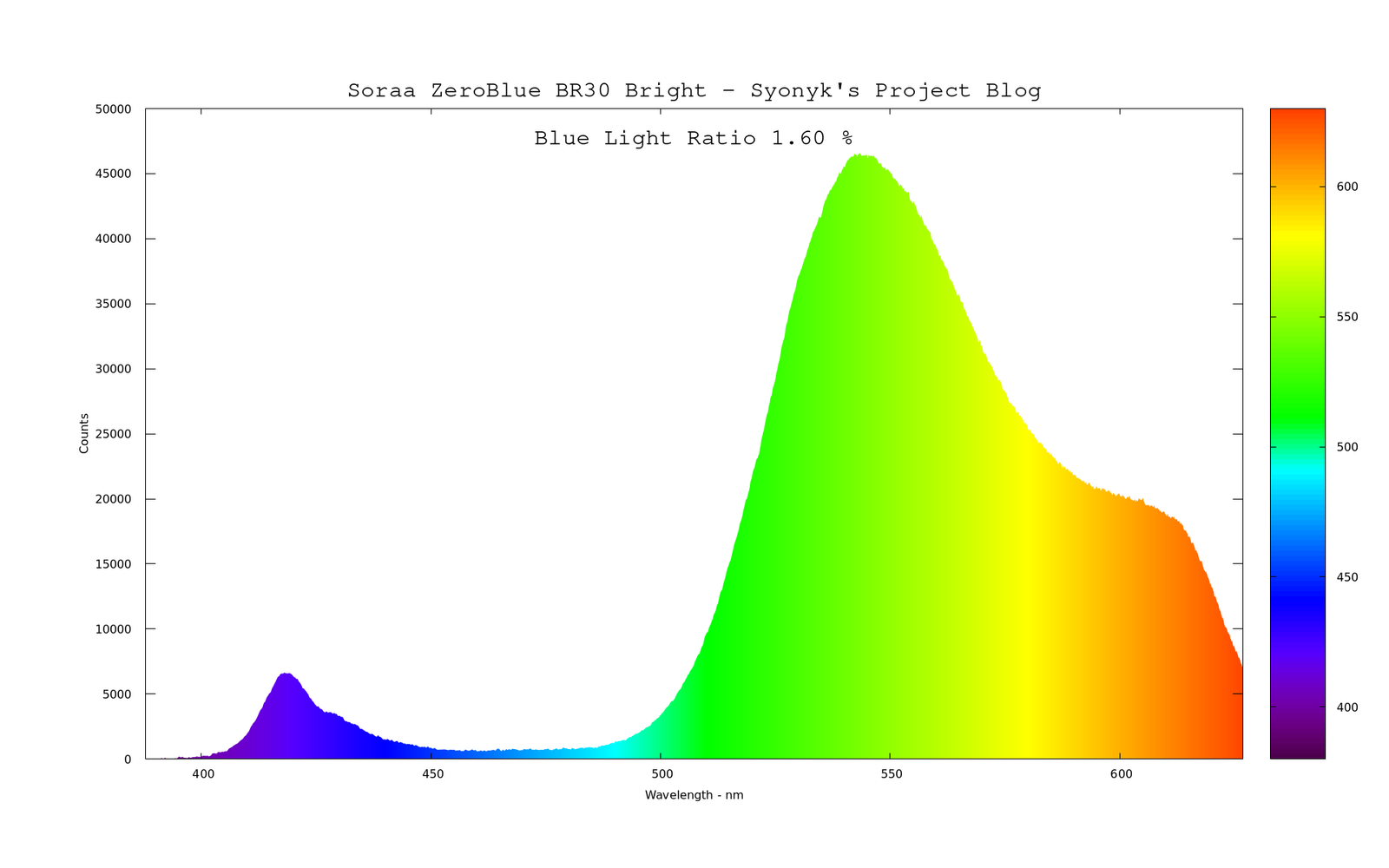
Dimmed, the blue light ratio dips a bit. The light visually looks the same, but, somehow, manages to be even less blue than when bright. This is a great behavior, and I certainly didn’t expect it - but here it is, in raw data. Less blue when dimmed. It’s far better than even my preferred incandescents!
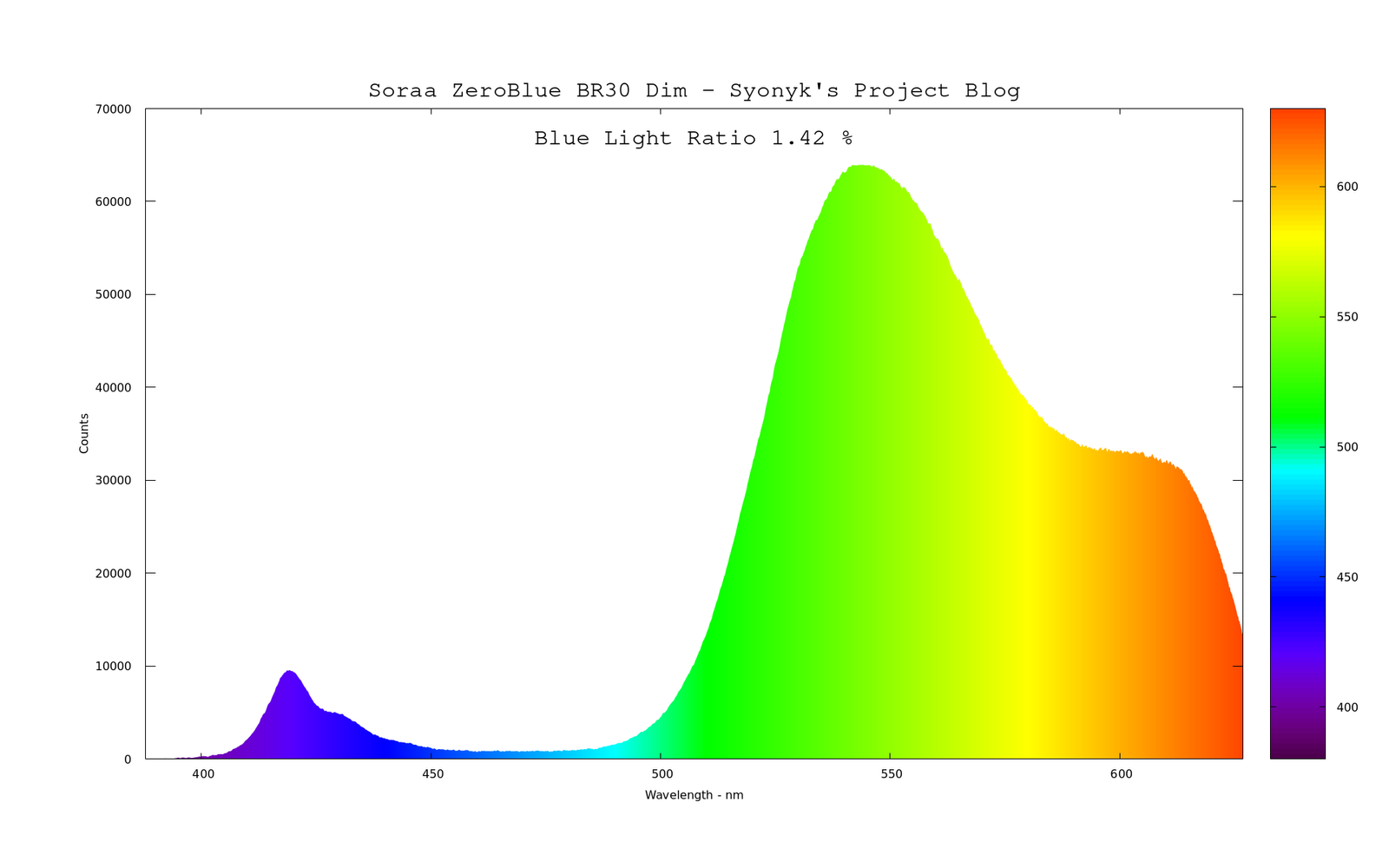
While I have every reason to believe that they’re using the same emitters in the A19 “standard light bulb” form, I subjected it to my spectrometer as well, and it’s actually slightly less blue than the overhead BR30 - not by much, but enough to make note of.
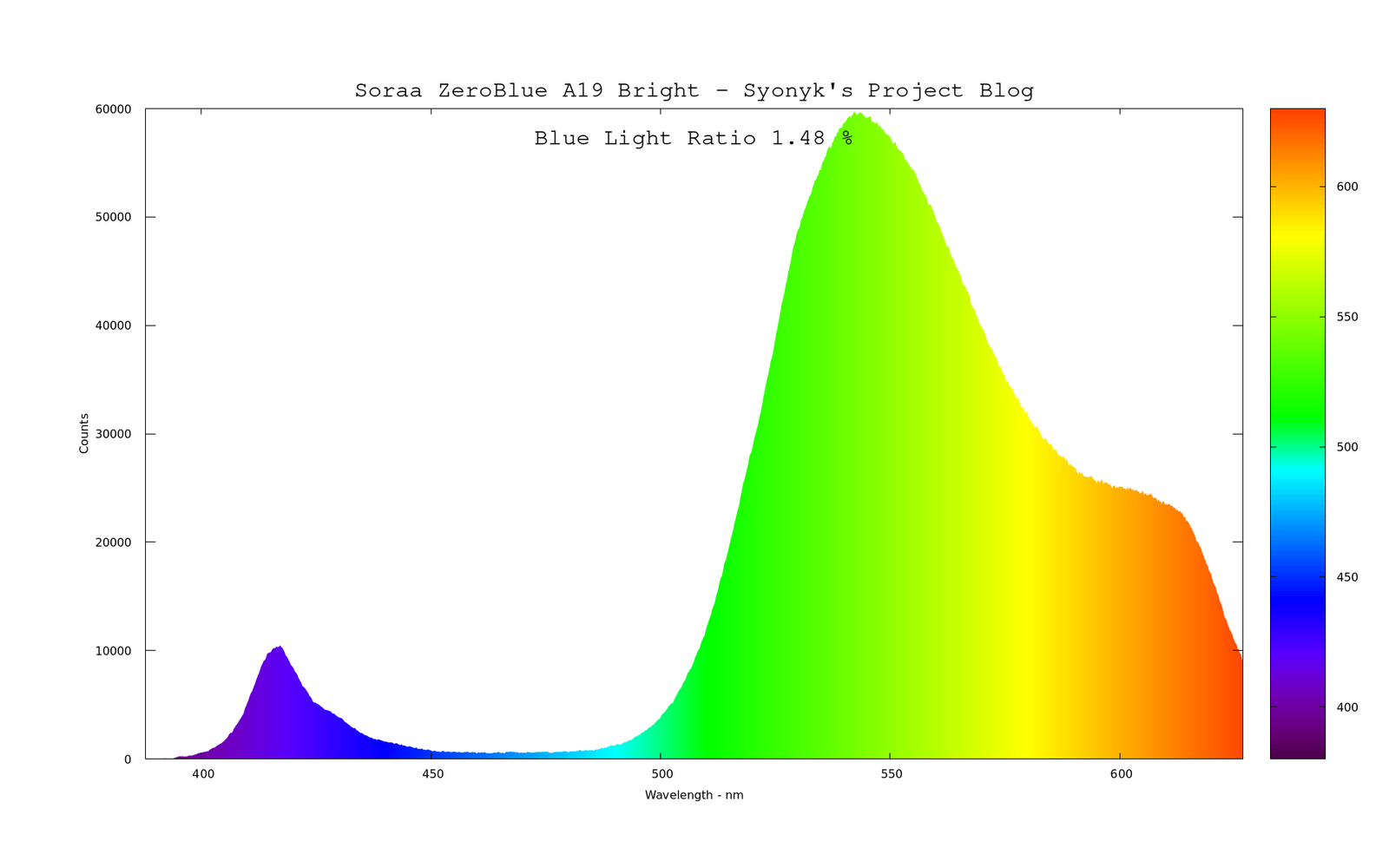
And, similarly, it manages to be “less blue when dimmed” too.
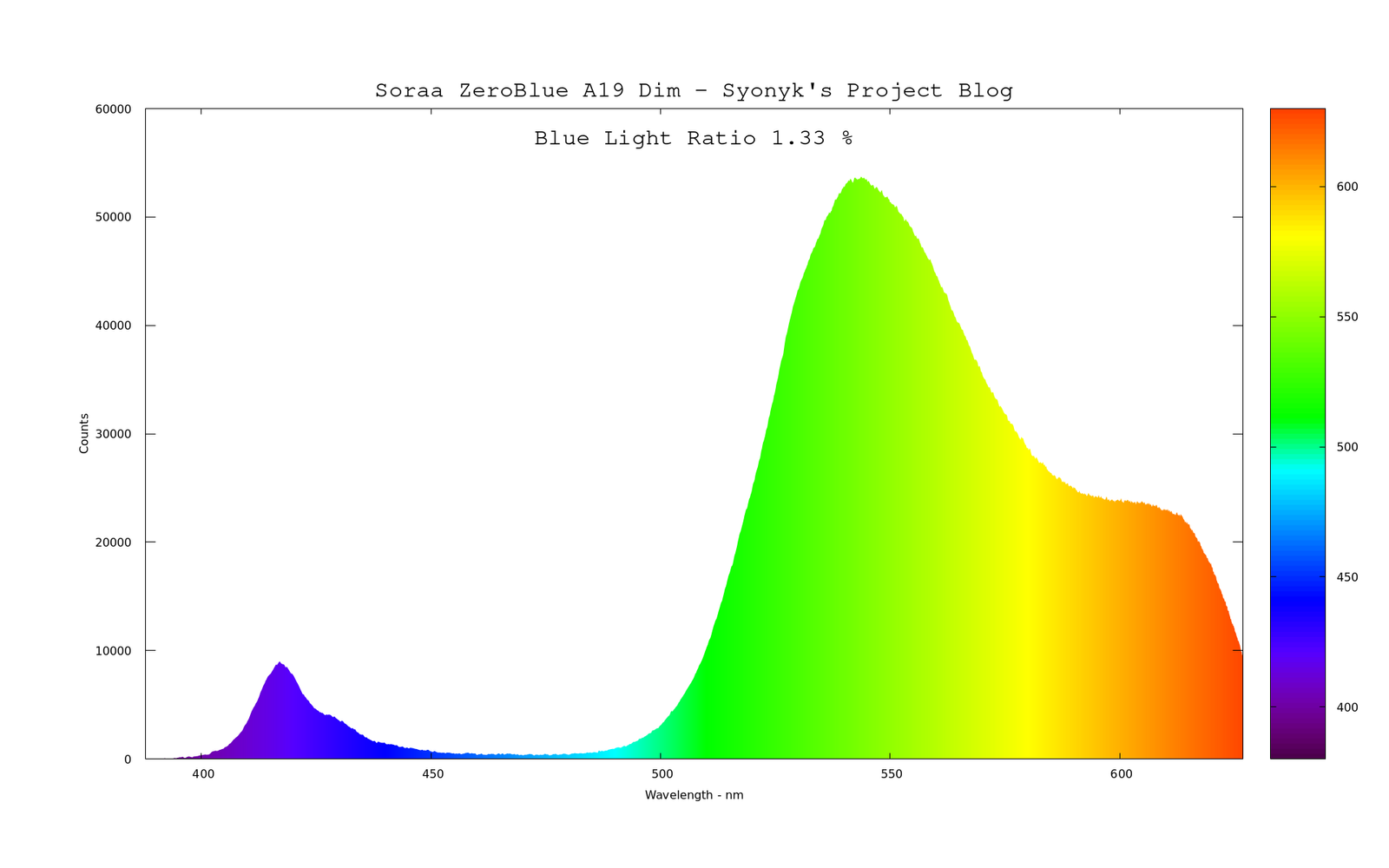
Dimming Behavior
I’d like to be able to skip this section, because it seems obvious that in 2024 any “dimmable” bulb should behave well on a dimmer, but, sadly, such is not the case. Some bulbs dim to 50% and then cut out, or won’t start at minimum brightness, or make racket while dimmed.
Starting out with the BR30 (the “can flood” type bulb), there’s nothing to say. This bulb behaves perfectly on a dimmer. It’s dead silent throughout the dimming range, it dims smoothly to almost 0% (I’ve no idea what the actual floor is, but almost nothing), and more importantly, it will start fully dimmed, gradually ramping up from 0% to the minimum dimming setting it runs at. In short, it’s perfectly behaved. I’ve not seen a better behaved LED bulb on a dimmer - there’s literally nothing to improve.
Which is why I’m sad to report that the A19 (“light bulb” form factor) isn’t nearly as well behaved. In addition to an irritating buzz when dimmed (it’s not the grinding howl of some of the worst incandescents I tested, but you’d notice it in a quiet room), it doesn’t start smoothly at full dim - it’ll just stay there, dark, buzzing away, until you bring the dimmer up and then drop it back down. I can’t explain the difference, other than “They’re different, internally.” Or possibly I have a bad bulb - I don’t have multiple A19s to compare from my order.
So I’ve no hesitation at all recommending the BR30s for dimmed overhead applications, but I’m just not sure about the A19 bulb. It’s not a bad bulb, but it’s not well behaved on a dimmer.
That said, you will want these on a dimmer, because they’re quite bright in the evening - far too bright, in my opinion, to run without a dimmer if you have more than one or two (and even two gets pretty bright).
Subjective Color Observations
I’ve not really talked about color rendering of bulbs before, because I don’t have the equipment to measure it, and it’s less interesting to me than the “Does this bulb screw with your sleep?” question. There are a lot of claims made, and there are people who do far better testing of CRI than I do. Further, as I’ve noted, the CRI is only 80, because they’re literally missing a chunk of the spectrum.
But, visually? These bulbs are golden! They have a beautifully rich light, and while the blues are somewhat muted compared to a blue pumped, 5000K bulb, I think it’s a far nicer light for the evening - or simply indoor lighting in general. The light is just “rich” - in ways that are hard to describe, and harder for me to capture on camera (I’m certain there are people who can do it, I’m simply not one, and then we’d be reliant on your screen to reproduce the differences). You wouldn’t want to use this for color sensitive work, but as far as evening house lighting goes, it’s simply beautiful. Even people who don’t normally pay a lot of attention to color will comment on the difference when I switch between other bulbs and these.
So… Should You?
You may notice I’ve rather not mentioned an important point here - price. And that’s because these are very, very expensive bulbs. They’re $40/bulb in 4-packs, plus non-trivial shipping. If you abandon a cart, you might get a 20% discount code in your email eventually (say, ‘ZB20RETURN’), and they do offer cheap shipping above a certain order amount, but you’re still north of $30/bulb. And while I think they’re beautiful bulbs, that’s a lot of money to be spending on lighting if you have more than a few cans. Plus, the A19 I have doesn’t dim very well and buzz, so you’re pretty much limited to the BR30 form factor if you want good evening light you can dim reasonably. Throw in $40 for a dimmer, and you’re at $200 to light a room with four of these bulbs. Plus you might want a spare or two - I’ve no idea if these will be available long term or not. I’d hope so, but their customer service leaves much to be desired (they double charged me for an order and I’ve yet to find a human, so I had to get my credit card company involved). I’d say buy them on Amazon, but they’re not even available there. Soraa got bought out by EcoSense, so probably no longer meaningfully exists as a company.
Final Thoughts
Fundamentally, these bulbs demonstrate the point that LEDs don’t need to suck for humans. You can build a LED bulb that uses a good bit less power than a comparable incandescent bulb, while still not blasting out the blue that keeps humans awake at night. Unfortunately, it’s not at all common - this is the first set of them I’ve found that work in a house, and the cost is “Ouch.”
What would I love? I’d love something like the Warm Glow bulbs based around this technology. Have a good rich full spectrum LED when at full bright, and as you dim them (evenly, silently, smoothly all the way to black), it switches over to the zeroblue style emitters to reduce blue as the sun goes down. Or even make them as a smart bulb that can follow the sun - I don’t like smart bulbs as a rule, but something that would simply “track the sun” in your area and fade out the blue after sunset would be amazing as a light (though I think just “dimming the bulb after sunset manually” would be a better option).
I just don’t have much hope for seeing this sort of thing as an affordable consumer bulb (it exists as a commercial building product, not that that helps me at home). It’s the sort of thing I’d buy, and that generally means a product won’t exist. Because the cheapest lumens for the cheapest price is about all the market will seem to bear, and so I’m left with dimmed incandescents.
Comments
Comments are handled on my Discourse forum - you'll need to create an account there to post comments.If you've found this post useful, insightful, or informative, why not support me on Ko-fi? And if you'd like to be notified of new posts (I post every two weeks), you can follow my blog via email! Of course, if you like RSS, I support that too.
